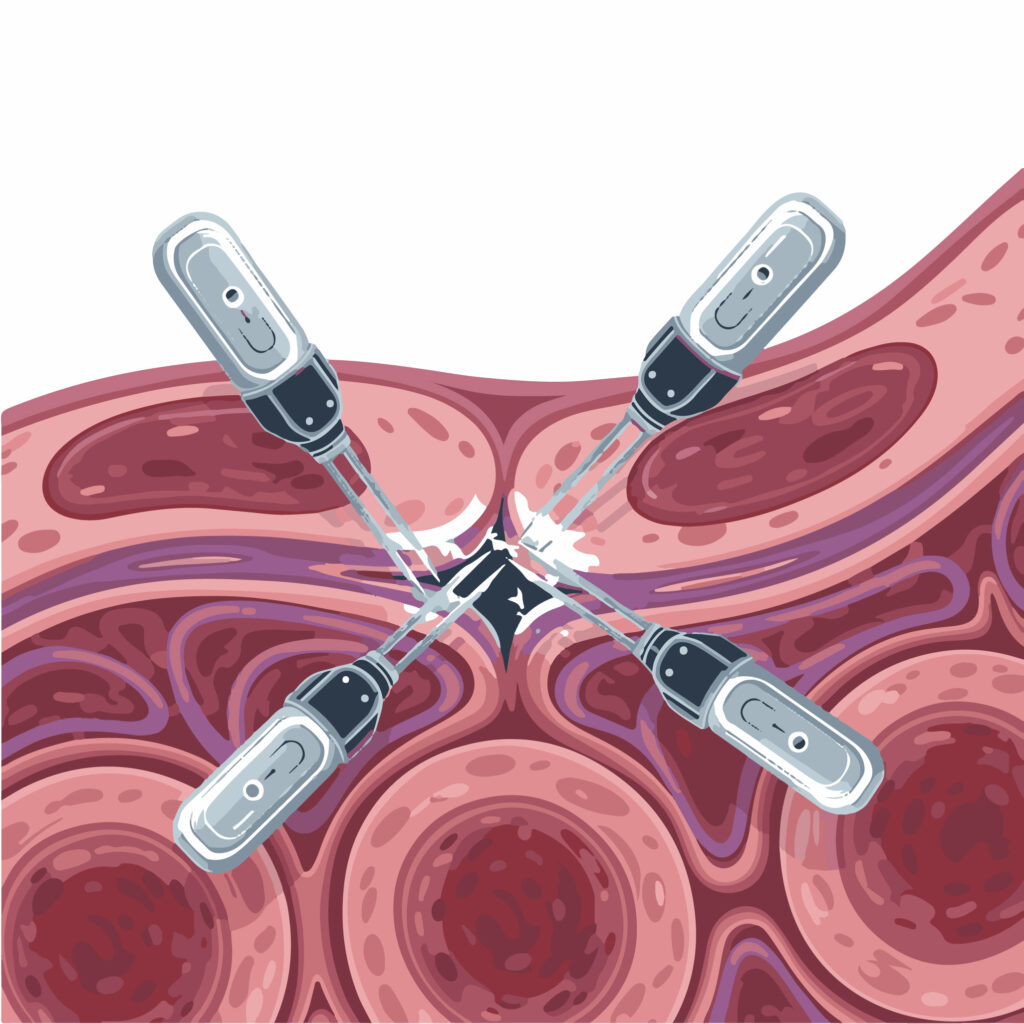Medical imaging continues to evolve at a remarkable pace, with technology, research and clinical practice converging to create a far more dynamic, efficient and precise diagnostic landscape. From artificial intelligence (AI) to hybrid imaging systems and portable scanners, innovation is reshaping not only how images are captured and interpreted but also how patients experience diagnostic care.
This article explores the significant developments transforming medical imaging in 2025 and considers how these advances may influence research, radiopharmaceutical development, and the publication of imaging science in the coming years.
Artificial Intelligence: From Assistance to Integration
AI remains the most disruptive force in medical imaging. What began as computer-aided detection has matured into systems capable of interpreting complex scans, prioritising workflow, and even generating draft reports. The current generation of AI tools no longer functions merely as adjuncts to human radiologists; they are becoming integral to diagnostic decision-making.
Deep learning algorithms are improving sensitivity and specificity in the detection of lung nodules, fractures, strokes and tumours. New multimodal models can analyse CT, MRI and PET data alongside patient histories and laboratory results to produce integrated diagnostic summaries. In practice, this means radiologists can concentrate on complex interpretation rather than repetitive screening.
The commercial landscape reflects this rapid expansion. Analysts project that the US AI imaging market alone will rise from around 500 million USD in 2024 to nearly 7 billion USD by 2033. The growth is fuelled by greater computing power, regulatory progress, and demand for efficiency within overstretched healthcare systems.
However, alongside the excitement lies a challenge. Most healthcare providers still struggle to implement AI tools at scale. Models trained on narrow datasets often underperform in diverse populations. Ensuring transparency, validation, and explainability remains a crucial priority. Regulators are adapting accordingly: the UK’s MHRA and the European Commission are both revising guidance on AI as a medical device, emphasising performance monitoring and human oversight.
In short, AI in imaging has moved beyond proof-of-concept. The coming years will determine whether integration into everyday practice can truly deliver the accuracy, speed and equity it promises.
Next-Generation Modalities: Sharper, Faster and More Informative
Hardware innovation is keeping pace with software. New imaging modalities are transforming the balance between resolution, dose and speed.
Photon-counting CT is a prime example. Unlike conventional CT scanners, which integrate the energy of incoming X-ray photons, photon-counting detectors register each photon individually. This delivers exceptional spatial resolution, improved contrast differentiation and reduced radiation exposure. Several manufacturers have now brought photon-counting CT to market, and early studies show promise for cardiovascular, pulmonary and oncological applications.
Whole-body MRI is also gaining traction. Long considered impractical due to time constraints, whole-body scanning has been revitalised by AI-assisted reconstruction algorithms. These can cut scanning times by more than half while maintaining detail. The technique is being explored for metastatic cancer detection, inflammatory disease monitoring and paediatric imaging where radiation avoidance is crucial.
Digital SPECT and hybrid PET/dual-energy CT systems are further redefining nuclear imaging. A recent breakthrough from UC Davis combined PET with dual-energy CT in a single hybrid platform, enabling superior tissue characterisation and quantitative analysis. For PET chemists and radiopharmaceutical scientists, this integration could allow more accurate tracer kinetics and more refined dosimetry data.
These technological advances collectively signal a shift towards imaging that is not only faster and clearer but also richer in diagnostic content. The ability to fuse structural, metabolic and molecular information in a single session marks a fundamental step forward for precision medicine.
Portability and Point-of-Care Imaging
Another significant development is the decentralisation of imaging. Portable and bedside scanners are extending diagnostic capability beyond the hospital environment.
Compact ultrasound systems are already standard in emergency medicine and primary care, but the concept is expanding into other modalities. Portable MRI systems—once inconceivable due to the need for powerful magnets—are now being deployed in intensive care units and mobile diagnostic vans. These devices, operating at lower magnetic field strengths, offer real-time neuroimaging for stroke or trauma without the need to transfer patients.
The implications are profound for global health. Low-cost, mobile imaging units can serve remote or underserved communities, bringing diagnostics to regions without fixed infrastructure. Combined with teleradiology, images can be transmitted securely for interpretation by specialists anywhere in the world.
As connectivity improves and costs fall, this movement towards patient-centred, distributed imaging could help reduce health inequalities while improving early diagnosis.
Patient Experience and Sustainability
Imaging innovation is not limited to technology; it also encompasses patient comfort and environmental responsibility.
Modern MRI systems are quieter, faster and more open, addressing long-standing concerns about noise and claustrophobia. New coil designs and AI-based motion correction are making it easier to obtain high-quality images from restless or anxious patients, including children.
Sustainability has become another major focus. Imaging departments are significant consumers of electricity and, in the case of MRI, liquid helium. Manufacturers are developing zero-boil-off cryogenic systems and energy-efficient cooling units to reduce operational footprints. There is also a growing movement towards lifecycle assessment of medical devices, examining energy consumption, supply chains and end-of-life recycling.
For healthcare institutions and researchers alike, environmental performance is increasingly influencing procurement and funding decisions. Imaging facilities are increasingly expected to demonstrate not only clinical and economic value but also ecological responsibility.
Regulation, Ethics and Workforce Adaptation
The speed of technological progress raises complex questions for governance and professional training.
AI-driven interpretation, hybrid imaging platforms and cloud-based data sharing all demand robust regulatory frameworks. Issues of data privacy, algorithmic bias and accountability are under scrutiny by both regulators and ethics committees. Radiologists remain legally responsible for final reports, even when assisted by AI tools, which underscores the need for transparent decision-support systems.
Workforce implications are equally significant. Rather than displacing radiologists, AI and automation are changing the nature of their work. The emphasis is shifting from manual reading to validation, data curation and system management. Radiographers and technologists must also adapt to new operational protocols, including the calibration and quality assurance of AI-enhanced scanners.
Education and continuous professional development will be vital to ensure that clinicians remain confident in these rapidly changing environments. Training curricula are already being revised to incorporate digital literacy, data interpretation and the ethical dimensions of AI.
The Expanding Frontier of Research
Recent breakthroughs underline the extraordinary potential of modern imaging research.
At the Keck School of Medicine of the University of Southern California, researchers have developed an ultra-high-resolution MRI system capable of visualising microscopic brain structures. This technology opens new possibilities for studying neurodegenerative disease, vascular changes and brain connectivity at unprecedented detail.
Similarly, hybrid PET and dual-energy CT systems are creating new pathways for quantitative imaging, allowing clinicians to differentiate between tissue types and metabolic states with remarkable accuracy. These advances are particularly relevant for oncology, cardiology and neurology, where subtle variations in tissue composition can indicate disease progression or response to therapy.
Meanwhile, companies such as Philips have achieved regulatory clearance for AI-enhanced MRI software that can triple scanning speed and sharpen image quality by up to 80 per cent. Such systems exemplify the merger of hardware and software innovation now driving the industry forward.
Consolidation and Commercial Dynamics
The first half of 2025 has also seen significant consolidation in the imaging technology sector. Established equipment manufacturers are acquiring AI start-ups to strengthen their digital portfolios, while diagnostic service providers are merging to gain economies of scale.
This consolidation could streamline innovation but may also reduce competition. For academic and independent researchers, partnerships with commercial entities are likely to become increasingly crucial for accessing cutting-edge technology and data.
Venture capital remains active, though investors are becoming more selective, favouring AI platforms with proven clinical validation or clear regulatory strategies. The focus is shifting from experimental algorithms towards practical, revenue-generating solutions integrated into existing workflows.
Implications for the Imaging Community
For scientists, clinicians, and editors, the latest advances in imaging present both opportunities and responsibilities.
Scientific journals and professional platforms have a vital role in documenting and analysing this technological shift. Articles that explore AI model validation, the optimisation of hybrid PET/CT systems, and the sustainability of imaging workflows are becoming increasingly valuable as the field matures.
From a research standpoint, collaboration across disciplines will be essential. Imaging specialists, data scientists, clinicians, and regulatory professionals must work together to ensure that innovation delivers tangible clinical benefits. Radiopharmaceutical researchers, in particular, can use emerging imaging technologies to refine tracer design, improve quantitative accuracy, and gain deeper insights into biological processes.
Most importantly, patient engagement should remain at the heart of progress. As imaging becomes faster, more accurate and less invasive, clear communication and transparency will be key to ensuring that these advances truly enhance patient care.
Looking Ahead
Medical imaging in 2025 stands at a fascinating juncture. Artificial intelligence, advanced detectors, hybrid modalities and portable systems are redefining what is possible in diagnosis and research. Yet the success of this transformation will depend not only on technological sophistication but also on human factors: regulation, ethics, training and trust.
The next few years will determine how effectively the imaging community harnesses these tools to deliver precision medicine on a global scale. The goal is clear—to move from images that merely show disease to systems that understand it.
For those engaged in research, radiochemistry, publication or policy, this is a moment to watch closely and to contribute actively. The imaging world is changing rapidly, and its future will be shaped by how today’s innovations are applied, validated and shared.
Disclaimer
The information presented in this article is intended for educational and informational purposes only. It does not constitute medical advice, diagnosis, or treatment. Readers should consult qualified healthcare professionals for medical concerns or before making decisions based on the content discussed. Open MedScience and the author are not responsible for any actions taken as a result of using this information.




